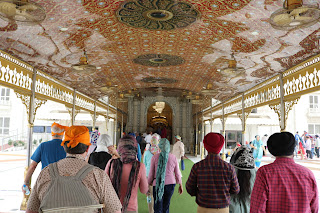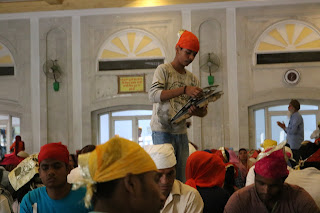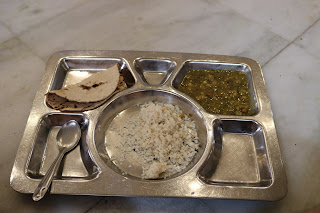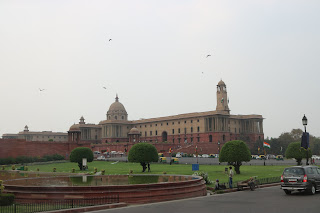March 22, 2018
We left the calm and mystical peace of Bhutan behind us yesterday and joined the bustling and chaotic world of Delhi. From a country that had 817,000 total population to a metropolitan city with over 20 million. Delhi serves as India’s capital and is the 3rd largest city in the world.
Traffic is very heavy and maneuvering around is a challenge that I definitely will leave to the more experienced local drivers. There is a constant honking of horns as cars, tuktuks, motorbikes, busses, trucks, and people attempt to avoid killing each other.
We left the calm and mystical peace of Bhutan behind us yesterday and joined the bustling and chaotic world of Delhi. From a country that had 817,000 total population to a metropolitan city with over 20 million. Delhi serves as India’s capital and is the 3rd largest city in the world.
Traffic is very heavy and maneuvering around is a challenge that I definitely will leave to the more experienced local drivers. There is a constant honking of horns as cars, tuktuks, motorbikes, busses, trucks, and people attempt to avoid killing each other.
We started our day with an orientation meeting for the group as new members joined those of us who were on the Bhutan trip. We then traveled across town to visit a Sikh Temple. It is a place of worship where everyone is welcome regardless of race, class, or religion. To enter the temple we had to remove our shoes and socks and cover our hair.
As we approached the stairs we walked through a shallow pool of water to cleanse our feet.
The holy scripture book is placed on an elevated throne in the center. The Raagis were reciting scripture and singing a melodic tune. It was very calming.
There is a large pool located just outside the temple.
We made our way to the langar hall where food is prepared daily for the people.
A walk through the kitchen was very impressive. The food is mainly fixed by volunteers.
People patiently waiting for their turn to enter the hall and partake of the meal.
It was very organized and orderly as people filed into the room and took a spot on the carpet runners.
Trays and spoons were quickly distributed to everyone.
Servers brought the food around.
There was rice, lentils and corn, potatoes, and flat bread.
This is my tray.
It took about 15 minuets to eat the meal and then everyone carried their tray out to the washing station. It is really frowned upon if you don’t eat everything that you were served.
The whole experience was moving. They serve an average of 10,000 people every day. Think about that for a minute. It’s truly astonishing.
After the temple we went to the India Gate. Built between 1921 and 1931 it is a war memorial dedicated to the Indian soldiers that died during the 1st World War.
There were some beautiful flowers planted around the base.
In 1971 a small structure was was placed underneath that serves as India’s tomb of the unknown.
As you can see this is a very popular spot.
We then did a slow drive through the parliament area. The buildings were originally built during the British rule period.
Our last stop for the day was at the Qutab complex. It’s a UNESCO World Heritage Site. Original construction was around 1192. The center tower, Qutub Minar, is 240 feet tall. The tower is basically Iranian in design.
Inscriptions on the tower tell about the history of its construction.
The Quwwat-UL-Islam Mosque is also on the complex site. There is a history about how the locals were tasked with building arches and the dome for the mosque but due to lack of knowledge on how to achieve that, they collapsed shortly after construction.
The old columns were supposed to hold up the arched roof which didn’t work.
There are some intricate designs on the columns.
One of the succeeding kings was going to build a larger tower but he was executed before it was finally. This is the base he had started.
We had our welcome dinner at nearby restaurant. The food was excellent and the variety of flavors was appreciated after the Bhutanese food. Tomorrow we continue touring the Delhi area.






















































No comments:
Post a Comment